
RECIPES
a really great pot of chickpeas
A side-effect of doing this cooking thing for 10+ years is that people seem to imagine I’m so sort of domestic diva, eating only homemade bread and milling my own grains and not just someone with an obsessive streak when it comes to making things exactly the way she wants them. Even though I’d love to live in some alternate universe where I’d always have time and energy to make my own, I’m unbothered by frozen breaded chicken things (erm, occasionally), tortellini, boxed stocks, and canned beans; the freezer almost always contains the first two (lunchbox heroes!) and the cabinets, the latter, which is why when friend told me a couple weeks ago kind of sotto voce, almost like a confession, the other day that she’d never cooked her own dried beans, I couldn’t even rouse myself to gasp in faux horreur.
But, I’ve been thinking since about when I bother cooking dried beans and when I absolutely do not and for me, when the beans are one ingredient among many or even with hummus, canned beans suit my needs perfectly. At times when you really want beans to be the star, and I’m going to make the argument that these could and should be, if you can find the time, it’s usually not as much as you think. I was shocked to find my (purchased 15 months ago) dried chickpeas that I’d soaked a little over 24 hours, totally softened after 20 minutes of simmering time, although I’d consider closer to 1 hour the norm. The benefit to cooking beans from scratch is not just deeper flavor but that you get to cook other flavors all the way into the beans, not just add them at the end as an afterthought.
And also: the broth. Bean cooking liquid is some of the most delicious brodo there is, especially enhanced with herbs, garlic, and more — promise you won’t dare dare drain it off. It alone could be the base of a soup, or my favorite way to eat chickpeas like this, with a splash of the liquid so it’s not quite soup or salad. But don’t stop there. Once you make a pot of really great chickpeas — here, we’re taking inspiration from Tuscan-style white beans but applying it to this meatier bean — I can think of at least eight ways to turn it into a meal, and if you combine multiple ideas (salsa verde and burrata, shown above; we added wilted spinach once, ahem, my tireless husband picked it up from the store on his way home), you have almost endless possibilities.
8 Things To Do With A Really Great Pot Of Chickpeas
• rewarm in in a little olive oil with some of the bean broth; wilt in a handful or two of greens
• stir in a spoonful or two of a tomato sauce
• finish it with a drizzle of olive oil and grated parmesan or pecorino
• finish it with salsa verde
• blend some to a smoother texture, add ditalini and a splash of cooking broth for a take on pasta e ceci
• put an egg on it
• put a burrata on it (can this be the new #putaneggonit?)
• grill some olive oil-brushed bread, rub it with a raw garlic clove, ladle beans over
• rewarm in in a little olive oil with some of the bean broth; wilt in a handful or two of greens
• stir in a spoonful or two of a tomato sauce
• finish it with a drizzle of olive oil and grated parmesan or pecorino
• finish it with salsa verde
• blend some to a smoother texture, add ditalini and a splash of cooking broth for a take on pasta e ceci
• put an egg on it
• put a burrata on it (can this be the new #putaneggonit?)
• grill some olive oil-brushed bread, rub it with a raw garlic clove, ladle beans over
Does it go without saying that you can also use the above as a way to doctor up a can of chickpeas? Just in case it does not, you absolutely can. If you’ve got time, take a couple cups of vegetable broth and simmer it with portion of the extras below (garlic, sage, peppercorns) until well-infused, about 15 to 20 minutes, then add canned, drained, and rinsed chickpeas and let them gently, barely simmer in the mixture for 10 to 15 minutes.
PREVIOUSLY
One year ago: Shaved Asparagus Frittata and Palm Springs Date Shake + Monkey Flip
Two years ago: Potato Scallion and Kale Cakes, Salted Chocolate Chunk Cookies and Crispy Broccoli with Lemon and Garlic
Three years ago: Lamb Meatballs with Feta and Lemon
Four years ago: Yogurt Panna Cotta with Walnuts and Honey and Spring Vegetable Potstickers
Five years ago: Classic Ice Cream Sandwiches and Cinnamon Toast French Toast
Six years ago: Crispy Potato Roast and Sour Cream Cornbread with Aleppo
Seven years ago: Classic Cobb Salad, Lime Yogurt Cake with Blackberry Sauce and Blue Cheese Scallion Drop Biscuits
Eight years ago: Buttermilk Ice Cream and Black Bread
Nine years ago: Carameilzed Shallots
Ten years ago: Margarita Cookies and Tequila Lime Chicken
Two years ago: Potato Scallion and Kale Cakes, Salted Chocolate Chunk Cookies and Crispy Broccoli with Lemon and Garlic
Three years ago: Lamb Meatballs with Feta and Lemon
Four years ago: Yogurt Panna Cotta with Walnuts and Honey and Spring Vegetable Potstickers
Five years ago: Classic Ice Cream Sandwiches and Cinnamon Toast French Toast
Six years ago: Crispy Potato Roast and Sour Cream Cornbread with Aleppo
Seven years ago: Classic Cobb Salad, Lime Yogurt Cake with Blackberry Sauce and Blue Cheese Scallion Drop Biscuits
Eight years ago: Buttermilk Ice Cream and Black Bread
Nine years ago: Carameilzed Shallots
Ten years ago: Margarita Cookies and Tequila Lime Chicken
And for the other side of the world:
Six Months Ago: Broken Pasta with Pork Ragu and Roasted Cauliflower with Pumpkin Seeds, Lime and Brown Butter
1.5 Years Ago: Baked Potatoes with Wild Mushroom Ragu, Twinkie Bundt and Oven Fries
2.5 Years Ago: Homemade Harissa and Cauliflower Cheese
3.5 Years Ago: Apple Slab Pie and Potato and Broccolini Frittata
4.5 Years Ago: Apple Mosaic Tart with Salted Caramel and Butternut Squash Salad with Farro and Pepitas
Six Months Ago: Broken Pasta with Pork Ragu and Roasted Cauliflower with Pumpkin Seeds, Lime and Brown Butter
1.5 Years Ago: Baked Potatoes with Wild Mushroom Ragu, Twinkie Bundt and Oven Fries
2.5 Years Ago: Homemade Harissa and Cauliflower Cheese
3.5 Years Ago: Apple Slab Pie and Potato and Broccolini Frittata
4.5 Years Ago: Apple Mosaic Tart with Salted Caramel and Butternut Squash Salad with Farro and Pepitas
A Really Great Pot of Chickpeas
Skip the parmesan rind if feeding strict vegetarians.
I didn’t get to test this recipe in a slow-cooker, pressure-cooker, and/or InstaPot because I am just one human, heh, but you can absolutely make beans in all of the above. I’ll fill in specific cooking times as I try it out each way, or point to them if commenters are kind enough to let us know how long this takes in any of the above.
- 1 pound dried chickpeas
- Water
- 2 tablespoons coarse or kosher salt, divided
- 2 fresh sage sprigs or 1 sage and 1 rosemary sprig
- 4 to 5 cloves garlic, unpeeled but crushed
- 1/4 teaspoon whole black peppercorns
- A parmesan rind (optional)
One day or several hours before: Place dried chickpeas in a large bowl and cover with 8 cups water and 1 tablespoon kosher salt, and let soak for as much time as you have, ideally at least 4 hours and up to even a day or two in the fridge. The benefits are simple: The longer you soak them, the less time they take to cook.
To cook: Drain chickpeas and add them to a large (ideally 5 quart) heavy pot with 12 fresh cups of water. Add another tablespoon (or more, you can taste the liquid to get it right) of kosher salt, sage, garlic, and peppercorns and bring mixture to a full boil over high heat. Skim any foam on top; with chickpeas, it’s significant and dramatic. Boil for 2 minutes then reduce heat to a low simmer, cover partially, and cook until chickpeas are firm-tender, as little as 25 to 30 minutes (what mine took after almost 30 hours of soaking, although I found this unusual) and up to 1 1/2 hours. Let cool in their broth. I usually fish out the garlic, sage, and peppercorns so they don’t get in the way but you can leave them in for extra-infusion.
To use: See any of the ideas above, and use as many as you’d like in combination. A little tomato sauce and greens over grilled bread, perhaps? A little brothy with pasta, a swirl of olive oil and parmesan? Salsa verde and burrata? You have so much deliciousness ahead.
To store: Store chickpeas in their cooking liquid in the fridge for up to one week.

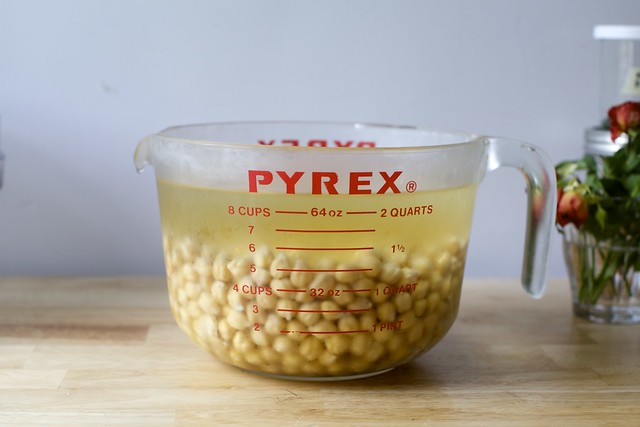
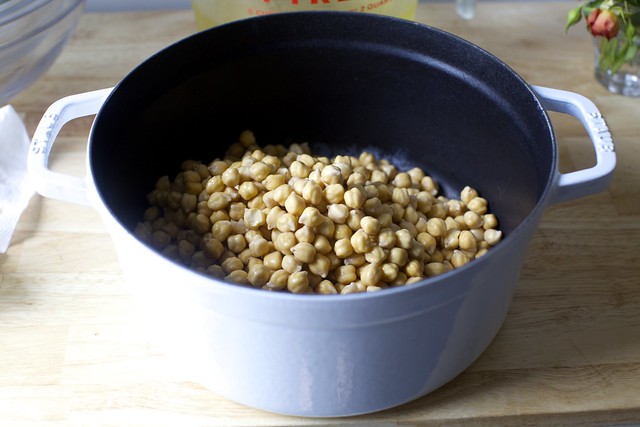
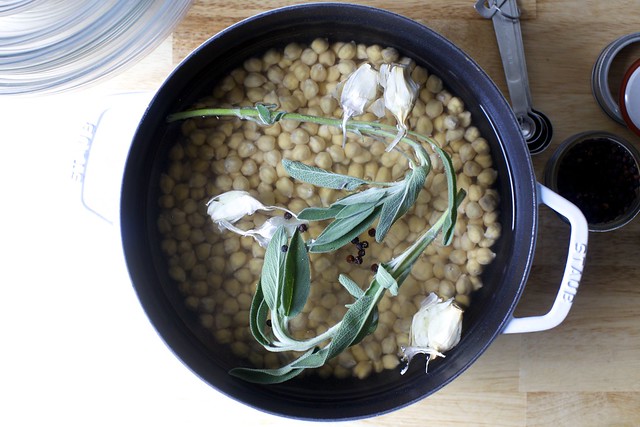
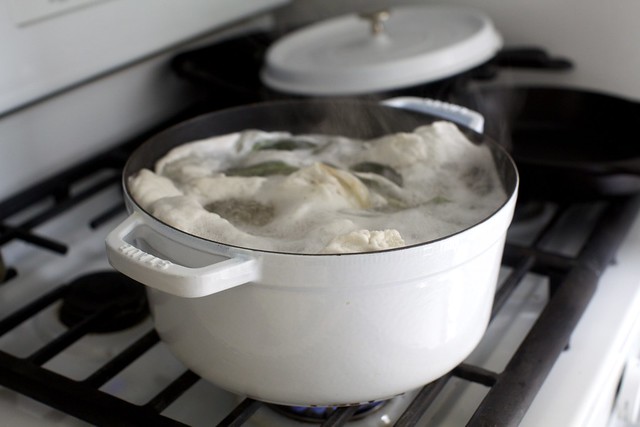
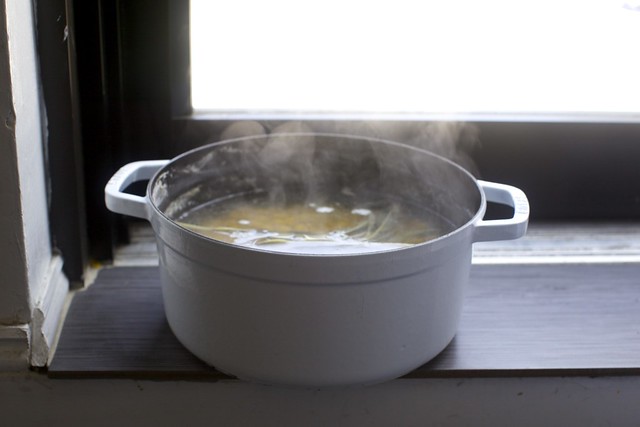
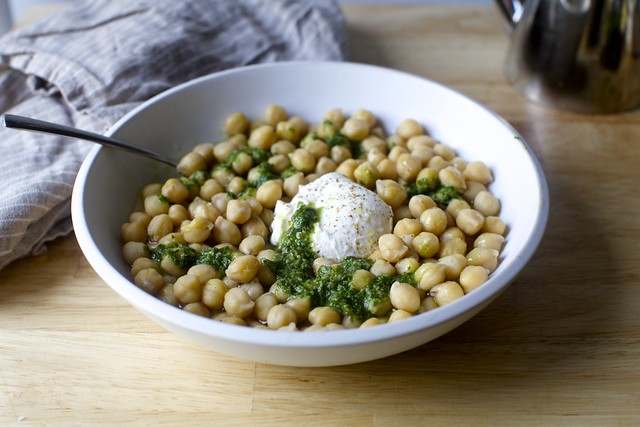
Comments
Post a Comment